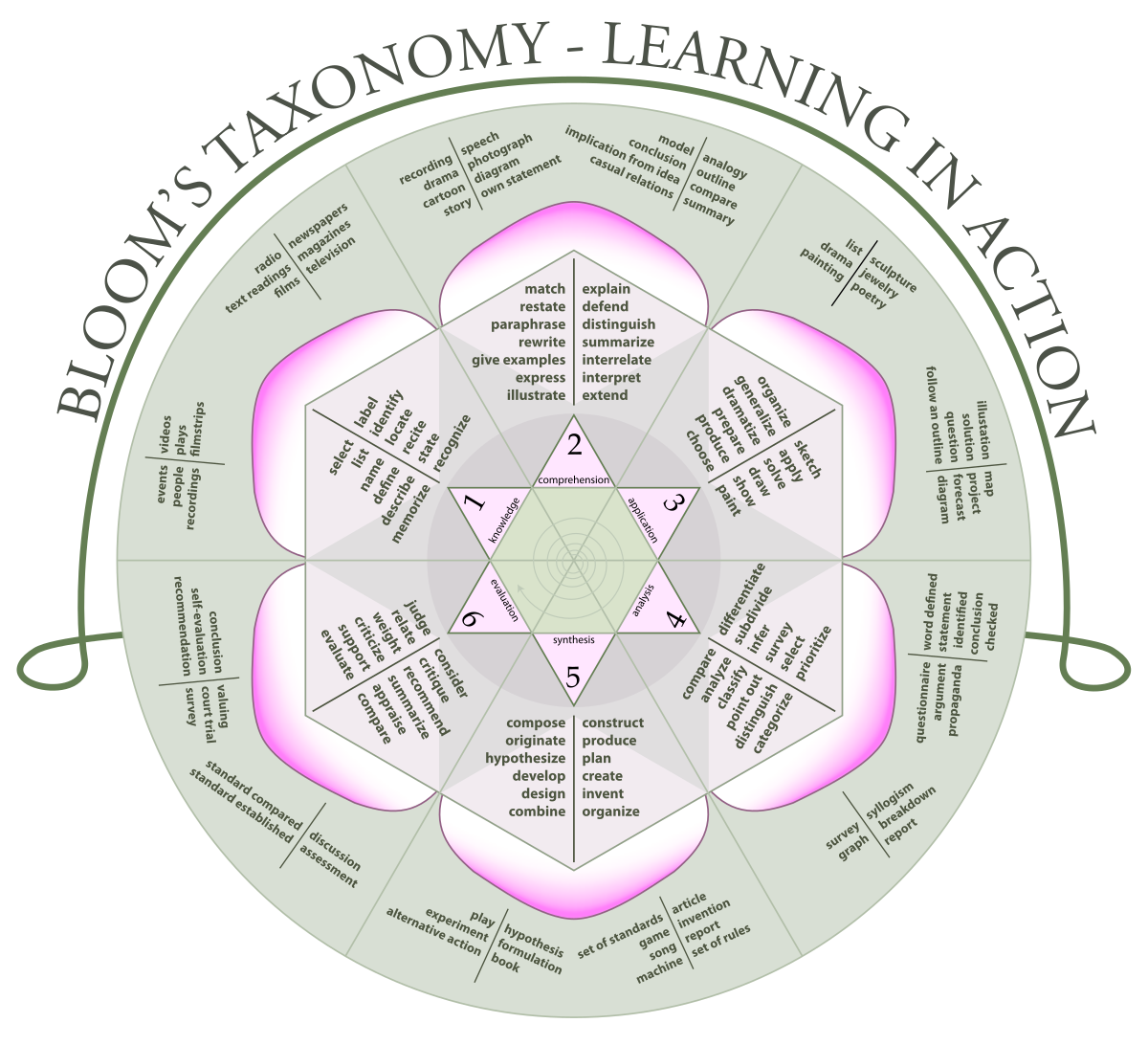You can legitimately argue that Bloom’s taxonomy is not a theory but is rather a classification system (that’s what taxonomy means after all) and that’s true, but it has relevance to how we think about education and what it is that we try to teach.
Bloom’s taxonomy has been updated many times since originally devised back in the 1956. The latest iterations still has the core themes but be careful which version you are looking at when reading around the subject.
The three core elements of the taxonomy are the cognitive, affective and psychomotor domains. Each of the domains has a hierachy of intellectual behaviour pertinent to that domain.
Cognitive (knowledge)
Affective (attitude and self)
Psychomotor (skills)
Each of these has a description of the levels of expertise but there is no doubt that most of the examples you will see and hear described link to the cognitive domains. I would argue that in emergency medicine and critical care all aspects are important and as educators creating a balanced curriculum and learning experience we need to be aware and ensure that we develop our learners in all areas.

“Blooms rose” by K. Aainsqatsi – Own work. Licensed under CC BY-SA 3.0 via Commons.
The benefits of a classification system to educators is that we can see how the curriculum, learning activities and assessments fit into each of the domains. For example if we are teaching new starters then we may focus on simple acquisition of facts and in the testing of these. In contrast if we are teaching and testing advanced learning then we should be asking them how they evaluate and balance information. In emergency medicine we make many decisions on a shift and often with incomplete information. We therefore frequently have to function at very high levels within the cognitive domains, and at levels that require much more than the simple regurgitation of facts. Taking that together with Bloom’s taxonomy it can help us understand how, who, when and how we can teach that decision making, and of course how not to. MCQs are unlikely to be the right way to test our senior trainees and consultants.
So Bloom’s is useful when writing learning objectives and measurable learning outcomes and you can see some nice examples here. University courses can use the categories to decide appropriate level questions for different levels of students. For example by asking higher level questions on synthesis and creation to masters level students. This is most obviously seen in the way questions and learning objectives are phrased.
If you want something a bit more entertaining try Harry Potter.
Why Bloom’s taxonomy matters.
Bloom’s taxonomy can therefore be useful for us to check that we are teaching at the right level, to the right people and with the right assessments.
Further reading
Bloom’s taxonomy http://www.learningandteaching.info/learning/bloomtax.htm
Wikipedia entry https://en.wikipedia.org/wiki/Bloom%27s_taxonomy
Bloom’s taxonomy for teachers https://www.youtube.com/watch?v=KGXANN3MUsg
Examples of using taxonomy to link to evaluation http://teaching.uncc.edu/learning-resources/articles-books/best-practice/goals-objectives/blooms-educational-objectives
Nice interactive model of the domains in University learning from Iowa state
More in this series
- Maslow’s hierachy of learning needs.
- Constructivism and socio-constructivism
- Lave and Wenger’s communities of practice
- Spaced repetition
- Miller’s assessment pyramid
- Bloom’s taxonomy
- Mastery, improvement and deliberate practice
- Kolb’s learning cycle
- Lewis change model
Before you go please don’t forget to…
- Subscribe to the blog (look top right for the link)
- Subscribe to our PODCAST on iTunes
- Follow us on twitter @stemlyns
- PLEASE Like us on Facebook
- Find out more about the St.Emlyn’s team
